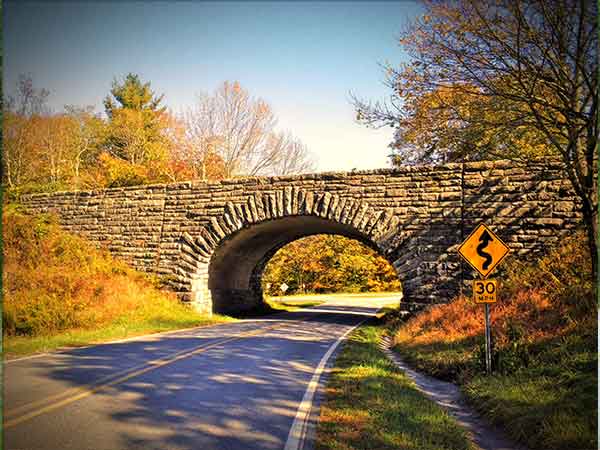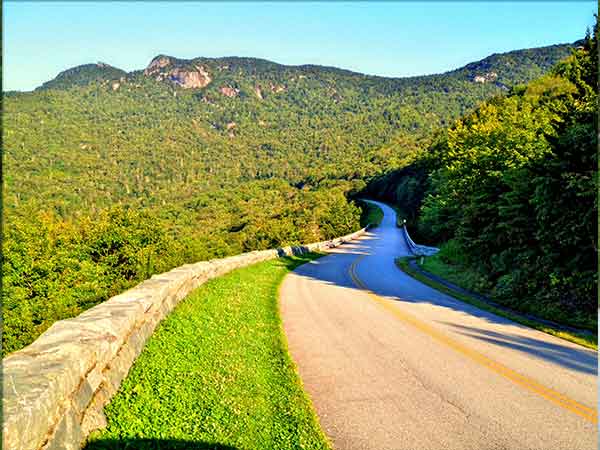The Blue Ridge Parkway follows the Appalachian Mountain chain for seemingly endless views of parallel ranges connected by cross ranges and scattered hills. From Shenandoah National Park the parkway follows the Blue Ridge, eastern rampart of the Appalachians, for 355 miles. For the remaining 114 miles it first skirts the southern end of the massive Black Mountains, named for the dark green spruce and fir that cover them. Then it weaves through the Craggies, the Pisgahs, the Balsams to end up in the Great Smokies.
Wildlife is a delight along the parkway. When the Sun is high groundhogs sit erect, and chipmunks and squirrels chitter and chatter. At night skunks, foxes, opossums, and raccoons are seen along roadsides. Look for white-tailed deer, turkeys, and black bears in early morning or evening. Salamanders less conspicuous but often more colorful thrive in this moisture rich environment. Over 100 bird species may be seen during the spring migration.
Blue Ridge Parkway is one of over 390 parks in the National Park System. The National Park Service cares for these special places saved by the American people so that all may experience our heritage. Visit www.nps.gov to learn more about parks and National Park Service programs in America’s communities.
The Park Watch Program allows you to help protect yourself, the Blue Ridge Parkway, and other visitors. To report criminal activity, accidents, fires, and other emergencies call 1-800-PARKWATCH (1-800-727-5928).
The southern Appalachian Mountains’ diverse history and culture are described at many overlooks and facilities along the parkway, including Humpback Rocks, Peaks of Otter, Mabry Mill, Blue Ridge Music Center, Brinegar Cabin, Northwest Trading Post, and the Parkway Craft Center at Moses H. Cone Memorial Park.



